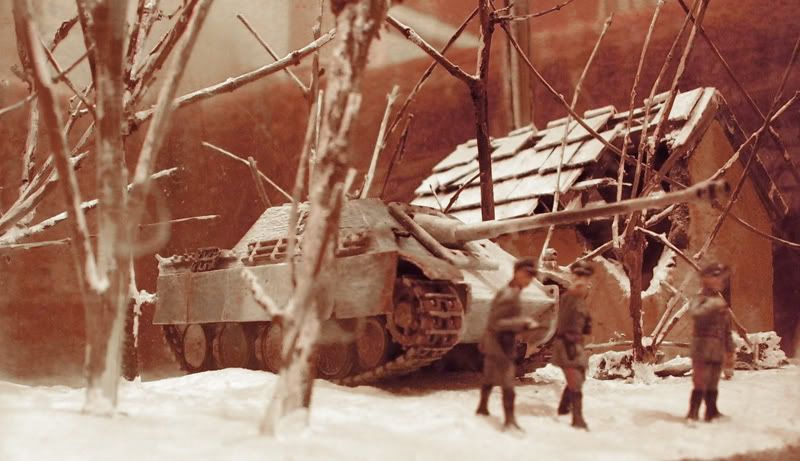there are plenty of websites that offer tutorials and forums, probably the most famous is
www.armorama.com although you may also find
www.subpirates.com of interest too. A quick search for 'scale model tutorial' in google nets quite a few results. also you could ask in this forum, there do seem to be quite a few modelers here. Check out the links page at
www.modelaces.com too, lots of good links to stuff there, and the site has some tutorials itself.
Painting figures is tricky although not as tricky as you might think once you
know the tricks. The main thing is that light does not fall on model figures in a realistically scaled fashion, so you have to emulate it. To do that, you have to approach things a little differently, if the figure is of a reasonable size, you need to paint it in a manner similar to producing an oil painting in the style of the old masters, if you've never done this, here's how that goes: you build up the skin almost in a 'skeletal fashion' so that the skin has a translucent appearance as though there is blood under the skin, as opposed to trying to create the skin with just a flesh-toned paint, which will never look right.
Some tricks which work when you do this are similar to techniques women use with make-up. You might have seen the green foundation that some women use before they put normal foundation over it. This reduces the red of the skin underneath to give a pale complexion. To adopt these tricks in modelling terms, what you have to do is accentuate the features with light and dark paint, and then overlay it with a thin flesh tone so that some depth is created. A classic example of this is painting eye sockets and the shadow areas of the face with a dark ochre colour, and highlighted areas such as the cheekbones with white, so that this faintly shows through your flesh tone and adds definition.
Carrying this on with the rest of the figure, you actually need to paint darker areas of cloth under the arms and lighter areas on the shoulders, tops of hats etc so that it takes on the appearance of light and shade viewed at a distance, also noting that colours usually have a 'scale look' - generally a bit paler than the full sized thing - as you are emulating viewing an object at some distance when you produce a model. You can just about make this out on the figures in this 1/72nd scale diaroma of mine, notice that the officer's arms appear paler on the upper surfaces to emulate light hitting that part of the uniform more than the underarms, similarly, I have not relied on natural lighting to do all the work with the jackets, the shadows where they overhang the trousers are actually painted a little darker to provide better definition than normal lighting can do at that scale. Much of the toplighting is done simply by drybrushing a thinned matt white onto upper surfaces, although in this case I had to also consider the fact that a lot of light bounces up off the snow and underlights things a little too:


Chock